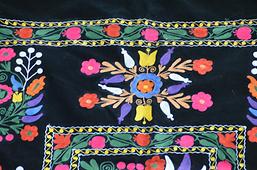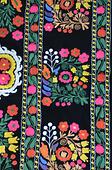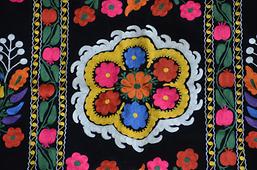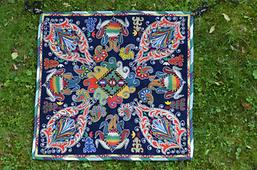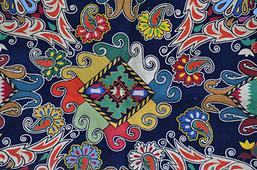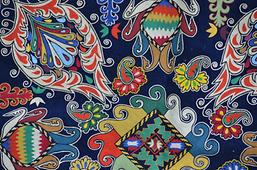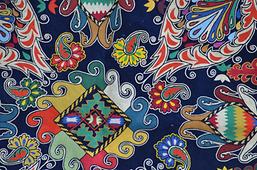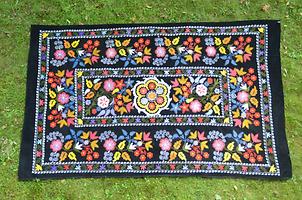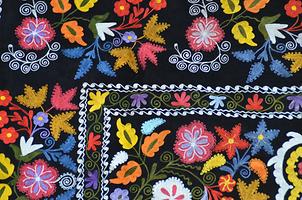Suzani, treasures of flowers in a special type of embroidery#
byAll photos are from the author's archive "Pictureflood Jontes".
In Arbeit#
The former central Asian khanates, now republics, produce a special type of textile. They are richly embroidered large pieces of cotton, used in former times to decorate the yurts and tents of nomads. Today they are highly treasured collectors' items. This particular art was particularly wide spread in Uzbekistan Asien, Usbekistan with its large traditional centers of commerce and trade like Samarkand Usbekistan, Samarkand or Buchara Usbekistan, Buchara . Located along the silk-road this way of producing beautiful handcrafted pieces of fabric has not disappeared.
The product is called "Suzani". The word is Persian, the former language of education and culture in all of central Asia, and it comes from "suzan" (meaning needle), the instrument used to produce those luxurious pieces, the art of production called "suzankari". The stitching/ embroidering is done with colorful strands of cotton or silk. Motives are stylized presentations of flowers, blossoms, leaves, twigs, fruits, particularly pomegranates. Motives can also show things that happen in the sky, like sun, moon or stars, and not very frequently even birds or fish. Uzbeks being Muslims, their religion is quite restrictive when it comes to depict people or animals. On the one hand this has led to truly grandiose ornamental art found on tiles and walls as part of their architecture and on the other hand to beautiful Suzanis as you can confirm yourself below.





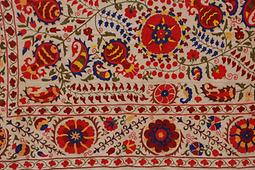
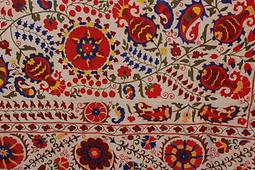

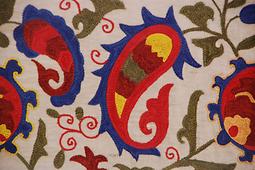
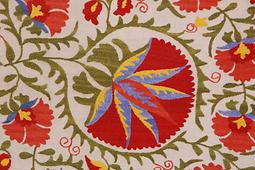


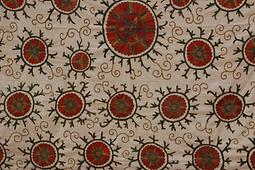



There is clear distinction based on wether white or black backgound material is used. In case of black, it seesm that the colours look particulalry brilliant. One can buy Suzanis in textileshops, but often the best pieces are found trading with locals on the road. Mind you, don't expect to get a good price unless you are used to all the tricks of oriental negotions , or should one call it "haggling": Whatever, it is it part of the process. Buying something at the price offered not only means you pay too much, the salesperson is also quite disappointed to miss out on good entertainmetns an arguments:-) .
The blue of blossom is Indigo coming from India. Red has been imported as carmine (crimson) form Russia. And Blcak comes from an extraction of the shell of pomegranates.
The oldest Suzani are from the end of the 18 th and the beginning of the 19 th century. In olden days, they were part of what brides would bring into a marriaie and would have been produced the suzani themselves! It was part of the traditional marriage ceremnony that the female bride would give to her future husband a partcularly beautiful piece that she had made, investing lots of time.
In the ethnological collections of non-Euroepan texteile sand clothing in teh colelction of the author thre are some seleceted beautiful samples of uzbeki suzani.
Examples of Suzani on whtie backgorund#

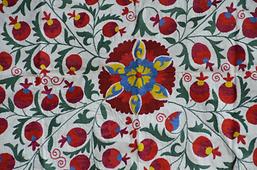
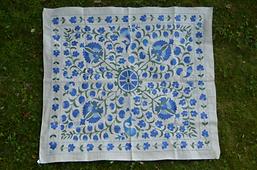
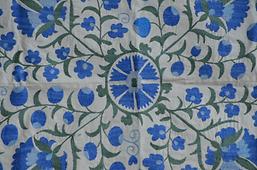
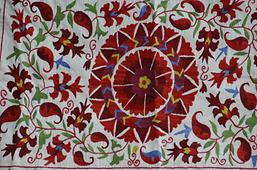
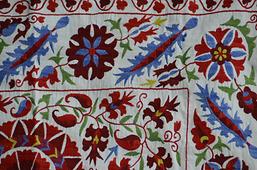





Examples for Suzani on black background#

